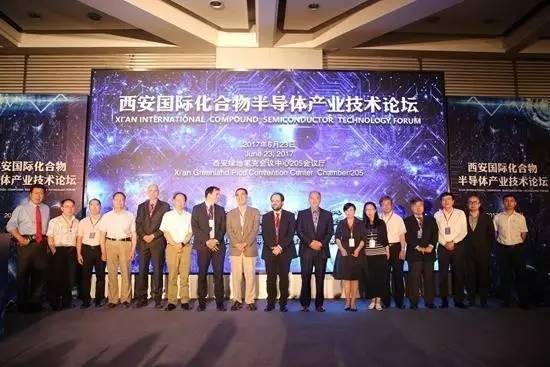When a language you don��t understand appears in your Facebook News Feed, you can touch a button and quickly translate it. Facebook offers a way of communicating not just with the millions of people who speak your language, but with millions of others who speak something else. Or at least it almost does.
��(d��ng)���Ę���ӑB(t��i)��Ϣ�г��F(xi��n)��һ�N�㲻�����Z����������c��һ�����oѸ�ٷ��g�@Щ��(n��i)����Ę���ṩ��һ�N����ʹ�㲻�H�����c��(sh��)���f���v����Z�Ե��˽�����߀�����c��(sh��)���f�v�����Z�Ե��˽������������ٿ����fĘ������������
This morning, the company��s central artificial-intelligence lab released a paper describing a new technology that could accelerate the evolution of machine translation not only inside Facebook but across the internet. According to Facebook��s tests, its technique does so far more efficiently than other methods, which could eventually lead to even sharper translations.
��������Ę����˾�˹��������Č���Ұl(f��)����һƪՓ������B��һ�N���Լ��ٙC�����g�l(f��)չ���¼��g(sh��)���@�N���g(sh��)���H���Լ���Ę����˾�C�����g�İl(f��)չ��߀���Լ���������(li��n)�W(w��ng)�C�����g�İl(f��)չ����(j��)Ę����(n��i)�y�@ʾ�������ֹ���@헼��g(sh��)��������������Ч�ʣ����߀����ʹ���g�ă�(n��i)�ݸ�������_��
Facebook��s approach relies on neural networks, complex mathematical systems that can learn tasks by analyzing vast amounts of data. This past fall, Google unveiled a new translation system driven entirely by neural networks that topped existing models, and many other companies and researchers are pushing in the same direction, most notably Microsoft and Chinese web giant Baidu.
Ę���ķ�����ه����(j��ng)�W(w��ng)�j(lu��)�͏�(f��)�s�Ĕ�(sh��)�W(xu��)ϵ�y(t��ng)������ͨ�^���������Ĕ�(sh��)��(j��)���@Ϥ�΄�(w��)��ȥ������ȸ��Ƴ���һ����ȫ����(j��ng)�W(w��ng)�j(lu��)�(q��)�ӵ����ͷ��gϵ�y(t��ng)��ԓϵ�y(t��ng)���^�����еĬF(xi��n)��ģ�ͣ������S��������˾���о��ˆTҲ�ڳ�����ͬ���о��������M���e��ܛ���Ї��W(w��ng)�j(lu��)���^�ٶ���
But Facebook is taking a slightly different tack from most of the other big players. It��s using what are called convolutional neural networks, a technique invented by the venerable researcher Yann LeCun, who now oversees Facebook��s AI lab. Rather than analyze a sentence sequentially, one piece at a time, a convolutional neural network can analyze many different pieces at once, before organizing those pieces into a logical hierarchy.
���^Ę��������һ�N�c��������(sh��)�ИI(y��)���^���в�ͬ�ķ�������ʹ����һ�N���^�ľ��e��(j��ng)�W(w��ng)�j(lu��)��ԓ���g(sh��)���ɵ¸����ص��о��T�P��������l(f��)���ģ���������������Ę�����˹����܌���������e��(j��ng)�W(w��ng)�j(lu��)����ͬ�r�����S�ͬ�ă�(n��i)����Ȼ����@Щ��(n��i)�ݽM���ɺϺ�߉�Y(ji��)��(g��u)�ľ����������ǰ����һ��һ�εط���һ��������

Even if the system is only marginally more accurate than systems like the one Google rolledout in the fall, the company says its technique is more efficient that other neural network-based methods.
�mȻ�@��ϵ�y(t��ng)ֻ�ȹȸ��^�Ƴ���ϵ�y(t��ng)����(zh��n)�_һЩ����Ę����˾��ʾ���@헼��g(sh��)Ҫ������(j��ng)�W(w��ng)�j(lu��)����A(ch��)��������������Ч����
Others may help push the technique forward as well. Facebook is not only publishing a paperdescribing its new system but open-sourcing the software engine that drives the system, freelysharing the code with the world at large. It means that translation will evolve far more quicklyacross the internet��not just on Facebook.
�����˻�˾Ҳ���Ԏ������M�@헼��g(sh��)�İl(f��)չ�����Ę����˾���H�l(f��)���˽�B����ϵ�y(t��ng)��Փ�ģ�߀���_���(q��)��ϵ�y(t��ng)ܛ�������Դ���a�����M�cȫ��������@��ϵ�y(t��ng)�Ĵ��a���@��ζ�������H�H��Ę����˾��������(li��n)�W(w��ng)�ķ��g���g(sh��)������Ѹ�ٵذl(f��)չ��ȥ��




